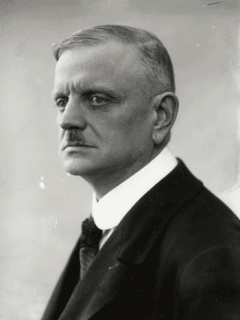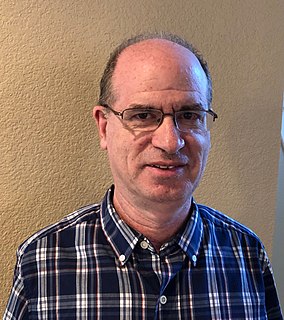Related Research Articles

Falstaff is a comic opera in three acts by the Italian composer Giuseppe Verdi. The Italian-language libretto was adapted by Arrigo Boito from the play The Merry Wives of Windsor and scenes from Henry IV, Part 1 and Part 2, by William Shakespeare. The work premiered on 9 February 1893 at La Scala, Milan.

Charles Edward Ives was an American modernist composer, one of the first American composers of international renown. His music was largely ignored during his early career, and many of his works went unperformed for many years. Later in life, the quality of his music was publicly recognized through the efforts of contemporaries like Henry Cowell and Lou Harrison, and he came to be regarded as an "American original". He was also among the first composers to engage in a systematic program of experimental music, with musical techniques including polytonality, polyrhythm, tone clusters, aleatory elements, and quarter tones. His experimentation foreshadowed many musical innovations that were later more widely adopted during the 20th century. Hence, he is often regarded as the leading American composer of art music of the 20th century.

Arnold Schoenberg or Schönberg was an Austrian-American composer, music theorist, teacher, writer, and painter. He is widely considered one of the most influential composers of the 20th century. He was associated with the expressionist movement in German poetry and art, and leader of the Second Viennese School. As a Jewish composer, Schoenberg was targeted by the Nazi Party, which labeled his works as degenerate music and forbade them from being published. He immigrated to the United States in 1933, becoming an American citizen in 1941.
Sonata form is a musical structure generally consisting of three main sections: an exposition, a development, and a recapitulation. It has been used widely since the middle of the 18th century.

Karl Wilhelm Julius Hugo Riemann was a German musicologist and composer who was among the founders of modern musicology. The leading European music scholar of his time, he was active and influential as both a music theorist and music historian. Many of his contributions are now termed as Riemannian theory, a variety of related ideas on many aspects of music theory.

Roger Huntington Sessions was an American composer, teacher and musicologist. He had initially started his career writing in a neoclassical style, but gradually moved further towards more complex harmonies and postromanticism, and finally the twelve-tone serialism of the Second Viennese School. Sessions' friendship with Arnold Schoenberg influenced this, but he would modify the technique to develop a unique style involving rows to supply melodic thematic material, while composing the subsidiary parts in a free and dissonant manner.
Gustave Reese was an American musicologist and teacher. Reese is known mainly for his work on medieval and Renaissance music, particularly with his two publications Music in the Middle Ages (1940) and Music in the Renaissance (1954); these two books remain the standard reference works for these two eras, with complete and precise bibliographical material, allowing for almost every piece of music mentioned to be traced back to a primary source.

The String Quartet No. 15 in A minor, Op. 132, by Ludwig van Beethoven, was written in 1825, given its public premiere on November 6 of that year by the Schuppanzigh Quartet and was dedicated to Count Nikolai Galitzin, as were Opp. 127 and 130. The number traditionally assigned to it is based on the order of its publication; it is actually the thirteenth quartet in order of composition.
G minor is a minor scale based on G, consisting of the pitches G, A, B♭, C, D, E♭, and F. Its key signature has two flats. Its relative major is B-flat major and its parallel major is G major.

The Symphony No. 5 in E-flat major, Op. 82, by Jean Sibelius is a symphony in three movements.

The compositions of Ludwig van Beethoven in the key of C minor carry special significance for many listeners. His works in this key have been said to be powerful and emotive, evoking dark and stormy sentiments.
Michael N. Barnett is a professor of international relations at George Washington University's Elliott School of International Affairs. Known for his Constructivist approach, his scholarship and research has been in the areas of international organizations, international relations theory, and Middle Eastern politics.

The Symphony No. 80 in D minor, Hoboken 1/80, is a symphony composed by Joseph Haydn in 1784 as part of a trio of symphonies that also included symphonies 79 and 81. This symphony, along with the one that follows it, and the one that precedes it, were not written for Prince Nikolaus, but for a Lenten concert performed in Vienna in March 1785. It is one of the relatively few later symphonies by Haydn to begin in the minor mode. Symphony No 80 is highly structured with both outer movements in sonata form. There is a common modulation pattern seen in all four movements.

F-flat major is a theoretical key based on F♭, consisting of the pitches F♭, G♭, A♭, B, C♭, D♭, and E♭ Its key signature has six flats and one double flat.
Claude Victor Palisca was an American musicologist. An internationally recognized authority on early music, especially opera of the Renaissance and Baroque periods, he was the Henry L. and Lucy G. Moses Professor Emeritus of Music at Yale University. Palisca is best known for co-writing the standard textbook A History of Western Music, as well as for his substantial body of work on the history of music theory in the Renaissance, reflected in his editorship of the Yale Music Theory in Translation series and in the book Humanism in Italian Renaissance Musical Thought (1985). In particular, he was the leading expert on the Florentine Camerata. His 1968 book Baroque Music in the Prentice-Hall history of music series ran to three editions.
Tom Lamar Beauchamp is an American philosopher specializing in the work of David Hume, moral philosophy, bioethics, and animal ethics. He is Professor Emeritus of Philosophy at Georgetown University, where he was Senior Research Scholar at the Kennedy Institute of Ethics.
Sonata Theory is an approach to the description of sonata form in terms of individual works' treatment of generic expectations. For example, it is normative for the secondary theme of a minor-mode sonata to be in either the key of III or v. If a composer chooses to break this norm in a given piece, that is a deviation that requires analytical and interpretive explanation. The essentials of the theory are presented by its developers, James Hepokoski and Warren Darcy, in the book Elements of Sonata Theory, which won the Society for Music Theory's Wallace Berry Award in 2008. Although the theory is particularly designed to treat late-eighteenth-century works such as those by Mozart, Haydn, and Beethoven, many of its principles are applicable to works in sonata form from later centuries.
Frederick John Teggart (1870–1946) was an Irish-American historian and social scientist, known for work on the history of civilizations.

G minor has been considered the key through which Wolfgang Amadeus Mozart best expressed sadness and tragedy, and many of his minor key works are in G minor. Though Mozart touched on various minor keys in his symphonies, G minor is the only minor key he used as a main key for his numbered symphonies.

Timothy L. Jackson is an American professor of music theory who has spent most of his career at the University of North Texas and specializes in music of the eighteenth through twentieth centuries, Schenkerian theory, politics and music. He is the co-founder of the Journal of Schenkerian Studies. In 2020, he became controversial for editing a special issue of that journal containing articles criticizing Philip Ewell's plenary talk "Music Theory's White Racial Frame".
References
- 1 2 3 4 Morgan, Paula (2001). "Hepokoski, James A(rnold)" . Grove Music Online . Oxford: Oxford University Press. doi:10.1093/gmo/9781561592630.article.46971.(subscription or UK public library membership required)
- 1 2 "James Hepokoski". Yale University . Retrieved 28 November 2021.
- ↑ "James Hepokoski designated the Moses Professor of Music". Yale News. 10 May 2017. Retrieved 28 November 2021.
- ↑ "James Hepokoski Publishes New Sonata Theory Handbook". Yale University. 16 December 2020. Retrieved 28 November 2021.